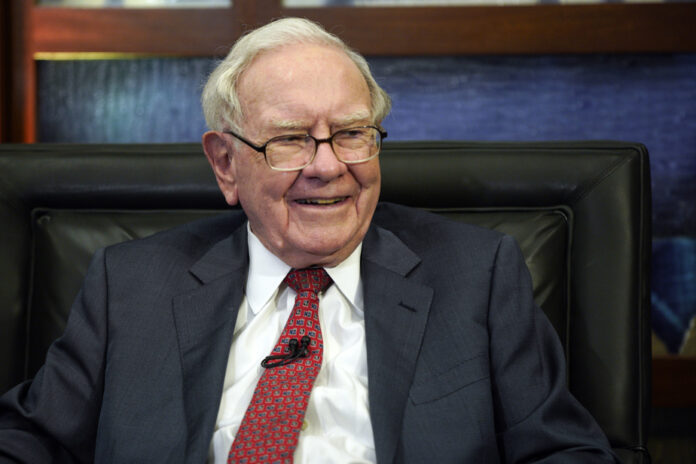15 years ago this week, billionaire investor and businessman Warren Buffett published what would become the most famous text of his life.
At that time, October 2008, things were not going well, to put it mildly.
The United States was hit by one of the worst economic crises in history. Victim of the bursting of the American real estate bubble, the financial giant Lehman Brothers had just imploded, leading to the dismissal of its 25,000 employees and causing a domino effect on the world’s markets.
On Wall Street, financial markets had been in the red for months. Apple had lost 50% of its value since the start of the year. Amazon, 46%. Bank of America, 40%. Microsoft, 35%. And so on.
Far from slowing down, the falls accelerated. Several commentators claimed that we were days away from seeing American banks stop receiving paychecks from their customers, and from seeing ATMs stop dispensing money.
It is in this context that Warren Buffett published a letter on October 16, 2008 in the opinion pages of the New York Times.
“The financial world is in disarray, both in the United States and abroad,” Buffett wrote. In the short term, unemployment will rise, business activity will weaken, and the news will continue to be scary. And so… I buy American stocks. »
The investor explains that a simple rule dictates his purchases: “Be afraid when others are greedy, and be greedy when others are afraid. »
People are right to be afraid, he writes. “But fears about the long-term prosperity of the country’s many strong businesses make no sense. Most large companies will set new profit records in 5, 10, and 20 years. […] In the long term, the stock market news will be good. »
Buffett also warns not to see his letter as a signal that the falls are over.
“I am unable to predict short-term movements in the stock market. I don’t have the slightest idea whether stocks will rise or fall in a month or a year. What is likely, however, is that the market will rise, perhaps substantially, well before sentiment or the economy recovers. If you wait for the robins to sing, spring will be over. »
People who don’t invest and hold onto cash during the crisis, he says, have a false sense of security as their dollars depreciate due to inflation. “And no one knows when the “right” time to enter the market will be. »
In 563 words published during the storm, Warren Buffett conveyed to his readers the philosophy of a lifetime.
The stock market continued to fall in the months that followed. A sum of $10,000 invested in the largest American companies on the day Buffett’s letter was published was worth only $6,400 four months later, a drop of 35%.
However, in March 2009, the financial markets slowly began to rise. Nobody knew it at the time, but the S
What lessons can we learn from the letter written by Buffett?
First, Warren Buffett was 78 when he wrote these words (he’s 93 today). And so it’s not because you’re over the age of 65 that you suddenly become incapable of having stocks in your portfolio, and experiencing stock market volatility. A balanced portfolio will always include at least two components, stocks and bonds, regardless of our age.
Buffett also reminds us of the obvious: just because everyone around us is losing their minds doesn’t mean we have to lose them too. We can both expect the economy to enter a recession, and keep our investments and continue to invest more. People who continued to invest came out of the 2008 crisis with a nice sum in their portfolio. Those who panicked lost.
Finally, Buffett warns us: in a crisis, the ideal time to invest is only obvious after the fact. Investing and seeing the value of your investments fall further the next second sends an “error” signal to our brain. It’s counterintuitive, but you have to learn to ignore it. Seeing the value of a balanced and diversified portfolio decline is normal. A fall is simply an opportunity to buy assets at a better price. Not the end of the world.
As investors, we do not control the direction of the markets. But we have complete control over our reactions to the market.
Understanding it is the challenge of a lifetime – it was true in 2008, it still is today.
Many readers have questions regarding guaranteed investment certificates (GICs), whose returns have increased recently with rising rates.
Michel writes: “With bond yields rising, it is very tempting to sell stock securities to buy GICs in registered accounts, especially in retirement. What do you think ? »
The long (and more interesting) answer: it’s true that GICs offer returns of more than 5% per year, which hasn’t been seen since the days when you had to turn a crank to open the window. his car and we had to get up from the sofa to change the channel.
That being said, a 5% return when inflation is at 4% is not the geyser of wealth you might imagine.
A diversified portfolio of Canadian, American and international stocks has had average annual returns of 9% for 50 years, according to calculations by Justin Bender of PWL Capital2.
Replacing an asset that has the potential to generate 9% with an asset that generates 5% theoretically means accepting a drop in returns of 44% per year. This is not trivial. Sacrificing long-term growth for short-term security may not be the ideal solution for the majority of investors.
That said, is your portfolio too heavy in stocks, and therefore too volatile, for your tastes? In this case, increasing the portion allocated to bonds or GICs could be a sensible choice for you. Not to try to time the markets, but rather to try to find the portfolio that you are able to live with, regardless of the state of the markets.















